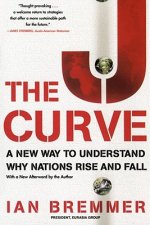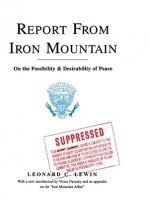
Kod: 08275503
International Finance Discussion Papers
Autor David Bowman
Prior to the recent financial crisis, one of the most prominent examples of unconventional monetary stimulus was Japan's "quantitative easing policy" (QEP). Most analysts agree that QEP did not succeed in stimulating aggregate dem ... więcej
- Język:
 Angielski
Angielski - Oprawa: Miękka
- Liczba stron: 36
Wydawca: Bibliogov, 2013
- Więcej informacji o książce

Zobacz książki o podobnej tematyce
Podaruj tę książkę jeszcze dziś
- Zamów książkę i wybierz "Wyślij jako prezent".
- Natychmiast wyślemy Ci bon podarunkowy, który możesz przekazać adresatowi prezentu.
- Książka zostanie wysłana do adresata, a Ty o nic nie musisz się martwić.
Więcej informacji o International Finance Discussion Papers
Za ten zakup dostaniesz 43 punkty
 Opis
Opis
Prior to the recent financial crisis, one of the most prominent examples of unconventional monetary stimulus was Japan's "quantitative easing policy" (QEP). Most analysts agree that QEP did not succeed in stimulating aggregate demand sufficiently to overcome persistent deflation. However, it remains unclear whether QEP simply provided little stimulus, or whether its positive effects were overwhelmed by the contractionary forces in Japan's post-bubble economy. In the spirit of Kashyap and Stein (2000) and Hosono (2006), this paper uses bank-level data from 2000 to 2009 to examine the effectiveness in promoting bank lending of a key element of QEP, the Bank of Japan's injections of liquidity into the interbank market. We identify a robust, positive, and statistically significant effect of bank liquidity positions on lending, suggesting that the expansion of reserves associated with QEP likely boosted the flow of credit. However, the overall size of that boost was probably quite small. First, the estimated response of lending to liquidity positions in our regressions is small. Second, much of the effect of the BOJ's reserve injections on bank liquidity was offset as banks reduced their lending to each other. Finally, the effect of liquidity on lending appears to have held only during the initial years of QEP, when the banking system was at its weakest; by 2005, even before QEP was abandoned, the relationship between liquidity and lending had evaporated.
 Szczegóły książki
Szczegóły książki
Kategoria Knihy po anglicky Society & social sciences Politics & government
17.48 €
- Pełny tytuł: International Finance Discussion Papers
- Podtytuł: Quantitative Easing and Bank Lending: Evidence from Japan
- Autor: David Bowman
- Język:
 Angielski
Angielski - Oprawa: Miękka
- Liczba stron: 36
- EAN: 9781288724659
- ISBN: 9781288724659
- ID: 08275503
- Wydawca: Bibliogov
- Waga: 82 g
- Wymiary: 246 × 189 × 2 mm
- Data wydania: 06. February 2013
Ulubione w innej kategorii
-

Joint Terminal Attack Controller (JTAC) Training Program
19.51 € -

Armed Insurrection
27.04 € -12 % -

Sandworm
26.63 € -20 % -

Flash Boys - A Wall Street Revolt
12.90 € -

Wretched of the Earth
10.57 € -21 % -

State and Revolution
4.97 € -18 % -

Children of the Matrix
17.18 € -19 % -

My Autobiography
14.02 € -13 % -

J Curve
19.31 € -12 % -

Case Against the Sexual Revolution
14.94 € -29 % -

The Trigger
22.87 € -26 % -

GREEN BOOK
7.31 € -28 % -

Yoga of Eating
11.38 € -25 % -

Powershift
8.23 € -21 % -

Politics
47.07 € -14 % -

Xi Jinping: The Governance of China
31.51 € -

Master of the Senate
23.58 € -10 % -

Report From Iron Mountain
13.21 € -13 % -

Reflections of a Nonpolitical Man
19.31 € -20 % -

Empire of Lies
14.43 € -16 % -

Xi Jinping: The Governance of China II
25.62 € -

Clash of Orthodoxies
12.90 € -21 % -

History of European Conservative Thought
23.78 € -21 % -

Accidental Superpower
18.40 € -19 % -

The Lords of Poverty: The Power, Prestige, and Corruption of the International Aid Business
12.50 € -27 % -

Abaddon Ascending: The Ancient Conspiracy at the Center of CERN's Most Secretive Mission
17.07 € -19 % -

Cold and the Dark
19.31 € -16 % -

Fight Like A Girl
10.36 € -28 % -

Giants
17.07 € -19 % -

Identity
11.28 € -24 % -

Lee Kuan Yew
18.40 € -20 % -

Deep State
15.45 € -24 % -

Next Decade
17.89 € -2 % -

Age of Ambition
11.38 € -28 % -

Return of Marco Polo's World
15.24 € -21 % -

Force of Reason
17.68 € -16 % -

Against Civilization
14.43 € -17 % -

Political Brain
14.23 € -26 % -

Politics: A Very Short Introduction
10.16 € -28 % -

Urban Warfare in the Twenty-First Century
25.62 € -9 % -

Nuclear Weapons and Foreign Policy
22.56 € -2 % -

Trade Marketing, Category Management, and Shopper Marketing
90.09 € -

Spirit of the Laws
23.89 € -

Psychology of Politics
20.53 € -

Reveille for Radicals
13.82 € -20 % -

Liberalism and Its Critics
32.73 € -

Voices from the Contemporary Japanese Feminist Movement
51.44 € -

Calculus of Consent
14.63 € -7 % -

Origins of American Politics
16.56 €
Osobný odber Bratislava a 2642 dalších
Copyright ©2008-24 najlacnejsie-knihy.sk Všetky práva vyhradenéSúkromieCookies






 21 miliónov titulov
21 miliónov titulov Vrátenie do mesiaca
Vrátenie do mesiaca 02/210 210 99 (8-15.30h)
02/210 210 99 (8-15.30h)